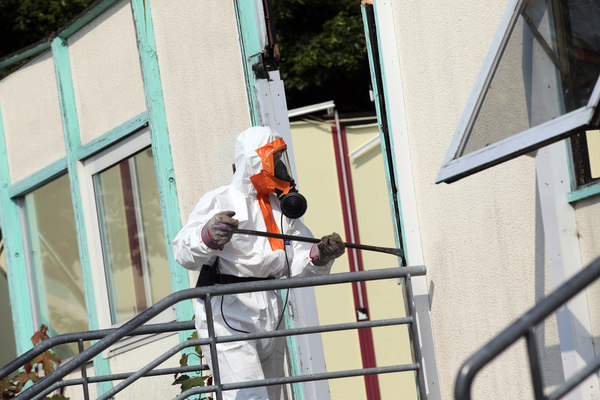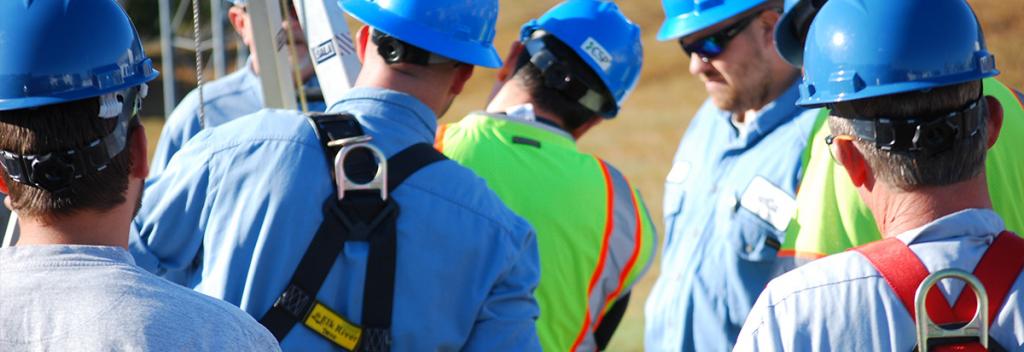All employers make contributions to the Social Insurance Fund in the form of insurance premiums for “injuries”. Such contributions are paid monthly for each employee. The established rates correspond to occupational risk classes. In the framework of this article, we will consider the essence of the concept of a professional risk and the methodology for its assessment.
Concept
Occupational risk is the likelihood of work-related events that are undesirable and can cause losses. In particular, occupational hazards arising in the workplace and forming adverse effects on the health of workers. According to the Ministry of Labor, occupational risk is understood as the likelihood of undesirable events (threats) associated with the work performed, causing losses.
Ensuring occupational safety at the enterprise in relation to employees is an important task for any employer. The guarantees are special payments to the FSS fund.
Profisk consists of the following elements:
- occupational diseases with partial disability;
- occupational diseases with a complete loss of working capacity;
- injury with partial loss of capacity for work;
- injuries with a complete loss of performance;
- death.

Core Profession Risk Classes
The essence of the concept of occupational safety in labor protection and their classes is very important for most Russian employers. The law defines the content of the risk as the possibility of harming the health of the employee (or death), which is associated with the professional labor duties of the employee. The level of such injuries, together with the costs of social insurance, forms a class of occupational risk under OKVED.
There are currently 32 classes. The greater the risk of injury, the higher the grade. The distribution of types of business by occupational risk classes is specified in the Rules established by the Government of December 1, 2005 No. 713. The highest tariff is typical for 32 classes - 8.5%, the lowest is typical for class 1 - 0.2%.
After determining the class of professional risk, you can calculate the appropriate rate. Insurance contributions may be made with the amounts of:
- salary;
- bonuses and allowances;
- vacation pay.
The amounts of payments cannot include the amount of sick leave benefits, material assistance.

Main levels
To determine the level of professional risks, the company conducts a study of working conditions, as proficiency risks are not so much related to the type of activity as to its organization at the workplace. These risks significantly affect the financial results of the company.
The procedure for determining the level of such risk is reflected in the legislation.
Evaluation Basics
Professional risk assessment is a technique that is carried out in order to identify possible injuries to employees, determine the causes of threats, ways to eliminate them, and in the absence of such an opportunity, take preventive and protective measures to control the risk. This is a systematic study of various aspects of an employee’s work.
A risk assessment should be carried out when the enterprise:
- the formation of new jobs;
- structural changes occur;
- working environment requirements are changing;
- security measures are changing, etc.
Now in our country there is no exact methodology for assessing profits, however there are several areas that can be used to solve the following problems: assessing profits for the health of an employee, their assessment in the management of labor protection, assessment and systematization of labor criteria for certification.
Based on the acquired information, a list of production reasons unsafe for the main occupations should be compiled, indicating risk characteristics and their quantitative features for each profession.For any unsafe or harmful factor of production, one can find the number of employees who are practically at risk of its influence. An action plan should be developed to reduce or eliminate harmful and unsafe industrial causes at the workplace, to adapt jobs to labor protection requirements and, thus, reduce risk takers in the organization.

The task of assessing the risks is to ensure the safety and health of employees during work. Their assessment is part of the organization’s management aimed at the formation and support of preventive measures to optimize risks and threats, including the prevention of unfortunate cases, injuries and occupational diseases.
Professional risk assessment is part of the risk management process and is an organized system that describes methods for solving your own problems. It analyzes the results and capabilities of unsafe events to make decisions about the need for risk treatment.

Evaluation principles
In the modern management system of the organization of labor, certain aspects of the assessment of the risk profile are developed. The main principles of assessment:
- study should not be spontaneous, but conscious action, the result of deliberate plans;
- Profit risk levels are directly related to salary. Under certain production criteria, allowances are granted to employees. It is also necessary to identify a list of activities that were aimed at lowering the risk profile, since they are associated with costs;
- the study of occupational risks should be clear to all participants in the employment relationship. From the foregoing, it can be concluded that professional methods for assessing risks should use different scales: ranks, intervals, etc .;
- risk assessment methods should ensure that they can be applied by representatives of different levels of administration, including managing groups, team leaders and foremen.

Evaluation Methods
The need for risk analysis at the workplace follows from the provisions of the Labor Code of the Russian Federation and social policy regarding the general rules of labor protection at the enterprise. The purpose of the risk assessment in the workplace is to inform employers and workers about the dangers that arise in individual places of work. The study of these threats and their scope - this is what allows for more effective protection. The literature mentions many workplace risk assessment methods. Here are the most popular ones:
- A preliminary hazard analysis of occupational risk is a method that allows you to assess the degree of risk using the formula:
W = S * P,
where S is the degree of damage;
P - the probability of damage.
- Qualitative risk assessment method. To calculate the level of risk, the formula is used:
W = S * P * E,
where S is the possible consequences of the event (loss as a result of the event);
E - hazard exposure;
P is the probability of the occurrence of the event.
- The matrix method of assessing occupational risk is a way to qualitatively evaluate this parameter. Impact assessment is carried out on a three-level scale for each hazard identified. The results of this analysis are presented in matrix form. Due to its transparency, the technique allows you to create a simple and quick version of preventive measures.
- Profit risk assessment for measurable factors. The idea of this method is to measure the level of a harmful factor (for example, dustiness, noise) and compare it with control values. This is how the degree of risk associated with the impact of a specific factor in the workplace is determined.
A general assessment of professional risks and the productivity of preventive measures in an organization can be determined by the main indicators of the effectiveness of the existing labor protection management system:
- Accident rate indicator (CK) is an indicator that reflects the number of accidents per 1000 employees. Usually CZK is determined for one year. It is calculated by the formula:
Cf = T * 1000 / P,
where T is the number of victims for a specified period of time;
R - the average number of workers.
- The severity of injuries (CT) is a factor that determines the number of days of disability per 1 injury. It is calculated by the formula:
Kt = D / T,
where D is the total number of days of disability for all victims;
T is the number of accidents (injuries).
- The death rate accidents rate (CMS) is an indicator that expresses the number of cases with a similar ending per 1000 employees. It is determined by the formula:
Kcm = (T * 1000) / P,
where T is the total number of deaths over a specified period of time;
R - the average number of workers.
- The indicator of the loss of working time (Ku) is an indicator that expresses the loss of working time per 1000 employees per year. This coefficient completely describes the state of injuries and reflects the total number of days of disability per 1000 people. The calculation looks like this:
Ku = Total * 1000 / P,
where Totch - the total number of days of disability for all victims;
R - the average number of workers.
Evaluation of these characteristics allows us to construct a general conclusion regarding the real frequency of accidents and the total loss of working time in the organization.

Assessment procedure
The risk assessment procedure consists of a sequence of 5 steps:
- step 1: identification of threats and people at risk that can cause dangers, as well as employees who are exposed to these dangers;
- step 2: assessment of risk types and ordering them according to importance; determining which risks are most important;
- step 3: deciding on actions; identification of measures necessary to eliminate or control the threat;
- step 4: the introduction of predefined preventive and protective methods in accordance with the list of hazard levels;
- step 5: monitoring and review; regularly updating professional risk assessment, especially in the event of significant changes in the organization.

Assessment stages
The risk assessment procedure can be divided into three main stages:
- the process of professional risk analysis, which consists of collecting information for its assessment, identifying threats, assessing the likelihood of occurrence and the possible size of losses;
- determining the acceptability of the risk, that is, whether such a risk is acceptable;
- planning and subsequent implementation of measures to eliminate or reduce professional risks.
Evaluation Documentation
The documentation in the process of assessing the risks of professional activity should contain the following groups of information:
- position characteristics;
- hazard identification information;
- assessment of risk parameters;
- information on eligibility criteria and risk level;
- protective measures necessary to eliminate hazards or reduce risks;
- the end result of the risk and recommendations for monitoring hazards with their periodic assessment;
- rules, standards and guidelines for assessing occupational risk.

Professionals Management Basics
Work on managing professional risks in organizations is often carried out under the supervision of a service or a safety engineer. Profit risk management is a rather complicated mechanism. It provides safety and improves working conditions. Professional risks are reduced precisely because of this.
The risk management system contains the following main elements:
- risk management goals and programs;
- planning;
- risk management procedures;
- monitoring system activity;
- study of the management system on the part of the employer and his authorized persons;
- reducing the risk of eliminating unsafe and harmful causes of production;
- control of unsafe and harmful causes at the source;
- decrease in the level of unsafe and harmful factors;
- monitoring the health of employees;
- informing employees about dangers, threats at the workplace;
- conscious implementation of labor protection rules;
- rational implementation of personal protective equipment and the prevention of occupational diseases.
Directions for reducing the risk
The employer must take the necessary measures to reduce the levels of professional risks:
- risk prevention;
- risk assessment;
- fight against sources of danger;
- replacing hazardous substances with safe or less hazardous ones;
- providing employees with relevant information and instructions.

Maintaining work safety, an employee approach is also important. The standards impose obligations on the employee and responsibility for the health of other people affected by his activities during work. The following measures for occupational risks must be observed:
- use personal protective equipment as intended;
- inform the employer of situations that pose a threat to safety and health;
- cooperate with the employer to ensure safety and health at work.
Conclusion
Occupational risk is the likelihood of adverse events that may cause corresponding health effects. Assessment and documentation of occupational risk is the primary responsibility of the employer. Informing the employee should be carried out before he is allowed to carry out labor activities. The employee must sign a hazard acknowledgment, which must be attached to his personal files. Evidence that an employee has been informed of the risk is of great importance in practice.
